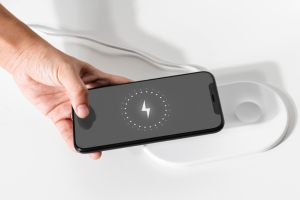No matter how ultra-modern your bathroom looks, things will not take time to turn ugly if the plumbing work is not up-to-the-mark or lack proper care. After all, it is one place where you extensively use different bathroom plumbing fixtures for water supply.
You cannot afford to ignore even a minor issue like leakage in the washroom because it not only causes water wastage but can blow up into something terrible in the future. That’s why you would want to keep everything, from a toilet to showerhead to sink to drains, in excellent health to avoid any sudden surprise. Anyway, don’t worry if you wonder whether you are on the right track or not.
Bathroom Plumbing Fixtures for Regular Cleaning
Here are a few suggestions regarding almost all the critical bathroom plumbing fixtures to enable you to keep your bathroom always sparkling clean and risk-free.
Faucet
Did you upgrade a washroom with a new sink? While it can be an excellent idea to replace an old sink, you must ensure that the faucet also works fine. However, when you talk about this fixture, you can also focus on your bathtub. At both these spots, you depend on the faucet for a smooth and clean washing experience. So, it makes sense to pay close attention to it. In this context, you need to know that the moving part of this plumbing fixture tends to break down due to heavy use. These components either demand tightening or replacement based on their existing condition.
If you face even the slightest discomfort while lifting or turning the faucet cap, you must get alert as it signals something is wrong inside. Then, you can also spot leaks around that area or from the spout. Please don’t wait for anything else to happen to fix it. It leads to massive water wastage, about 3,000 gallons a year. To fix it, you can check the aerator first for lime buildup and residues. Sometimes, a quick cleaning effort can prove rewarding. Try to open the aerator by unscrewing it. Then, remove its head, dip a small brush in vinegar to attack sediment on the nozzle, and put together everything back.
Toilet
Another common area for water leaks in the washroom can be your toilet. If you notice water around it, you can start by examining the tank. Do you see any overflow of water through the overflow pipe? You can find this pipe in the center of the tank connected with a small tube. If water seeps into this area, you would have to move the fill valve in a direction that the water level remains at least one inch lower than the upper part of the overflow tube. If you cannot determine this, look for a water level sign in the corner of the tank. It will be your guide.
Some people add food coloring drops into the flush tank to understand whether the flapper is leaking. If it changes color after 15 minutes, they take it as a hint of leakage issue. In this case, you would usually want to replace the ball.
Besides, you can also cultivate a few critical toilet habits. For example, people often use this system as a waste bin. From facial tissue to cotton balls to makeup pads to diapers and sanitary napkins, they dump everything in this. They don’t even bother about the consequences. As a result, problems like clogging become a regular occurrence. If you did the same thing, it’s time to tweak your habit for something better. Throw all these items in dustbins and not in the toilet. It will serve your needs untiringly, and you will be thankful to it for being there in your washroom for a long-time without causing much inconvenience.
Showerheads
Domestic bathrooms that receive hard and dirty water often suffer from an inefficient shower system. The showerhead fails to produce an even spray due to blocked holes caused by mineral deposits. It can be pretty annoying to take a bath under such a shower, especially if you are already getting late for an office meeting. The first instinct can be to replace this attachment. But it would be best if you remembered that water quality is the main culprit. Unfortunately, you cannot do much about it. However, you can clean your shower fixture from time to time to prevent this issue.
To clean the fixture, you would have to unscrew the nuts with a wrench or pliers. Just make sure you don’t end up damaging the finish of your bathroom plumbing fixtures while attempting to loosen the screws. For safety, you can use masking tape on the jaws of the instrument. Once the screw and showerhead come out, you can use a narrow wire to clean all the holes. Move the wire up and down gently through those pores before releasing the strong water stream through the head. When done with the job, assemble all the parts like they were.
Later on, you can dip the showerhead in vinegar to eliminate mineral buildups. It can take some time to dislodge the stubborn deposits. But it would help if you waited for them to leave their place. In the end, you can wipe the fixture with a clean wet cloth to remove all the residues.
Does all this sound too much work for you? Of course, bathroom maintenance is not an easy project. It needs ongoing attention and care. With busy schedules, you can struggle to manage all these areas. Also, if you don’t have DIY skills, it can be another challenge. But nothing should stop your hygiene and cleanliness mission. You can take professional help spread over a year to keep most of these problems at bay. Sometimes, emergencies may occur even after trying everything. However, it should not dent your spirit.
Water leaks are not a standalone issue. While its immediate effect is the loss of a precious natural resource, it also entails many risks. For example, wet floors can lead to slips and falls. Plus, your expensive décor can lose its sheen prematurely. Hence, it will be better to make washroom cleaning and care one of your priorities.


